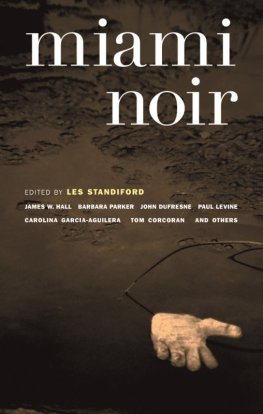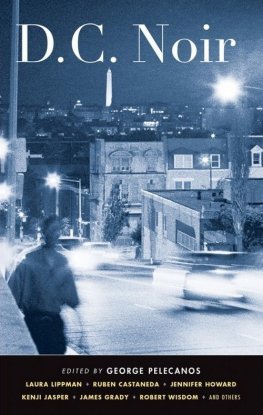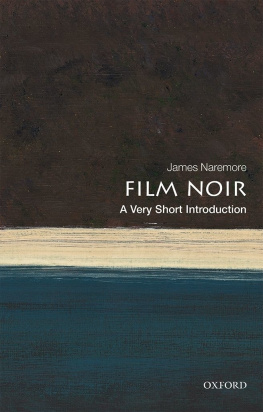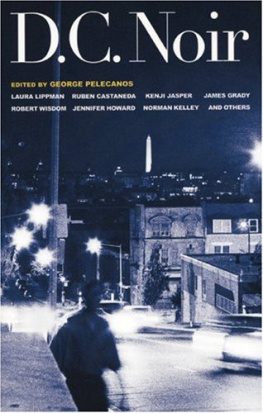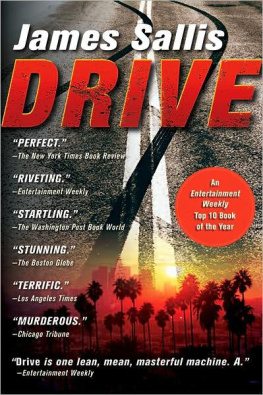This one is dedicated to the memory of Albert Haut, 1903-1976, whose photographs and stories of pre-war urban America proved the perfect introduction to the world of neon noir.
My Back Pages
Many writers believe that genre labels are a bad thing. Why be shackled to the tag of western writer or crime writer or romantic suspense writer or steampunk-bizarro-urban pastoral writer when you can just be a writer?
Part of me agrees. Its always good to keep em guessing. Then again, genre labels can be useful.
As Georges Simenon explained over 80 years ago: There are maybe ten or twenty literary genres, which are like the various sections of a department store in that they exist only by tacit agreement between seller and buyer, he said. Each category has its own rules, which commercial honesty forbids us to violate.
As a teenager, I understood and appreciated this. I was a card-carrying horror junkie, and wanted an easy way to get my fix.
Did the book have a predominantly black cover? Or a die-cut reveal of a possessed demon child? Perhaps even something so crass as the word HORROR running just below the publishers logo on the spine? If so, my $4.50 was yours! I was queasy at the sight of my own blood yet worshipped at the altar of the so-called SplatterpunksClive Barker, David J. Schow, John Skipp & Craig Spector and Joe R. Lansdale.
But of course these writers didnt limit themselves to horror; Lansdale, for example, wrote whatever the hell he wanted, producing westerns and private eye tales and crime novels. I picked up Lansdales Cold In July one hot morning in the summer of 1990 and had an instant revelation: Damn, this crime stuff is just as thrilling as the horror stuff Id been reading!
Another genre switch in my brain was flipped: from now on, Id go to bookstores seeking HORROR and CRIME. Eventually this list would expand to MYSTERY and SCI-FI and God help me, even SERIOUS LITERATURE. But around 1990, my brain became hard-wired for crime, baby, crime.
And since then, Ive had three great teachers who helped me navigate its mean streets.
One day in 1994, on a lunch break from my job as a magazine fact-checker, I wandered into a used bookstore in downtown Philadelphia and met my first: store co-owner and mystery novelist Art Bourgeau. Guys like you want to read about bad blondes in the middle of the afternoon, hed say, plucking vintage paperbacks from the cramped shelves and dropping them into my grubby mitts. James M. Cain. David Goodis. Jim Thompson. Chandler and Hammett. I devoured them all.
My second great teacher was Geoffrey OBrien. Ive never met Mr. OBrien, but I cant underestimate the importance of his book Hardboiled America, which provided me with brilliant history of the genre Id come to love. I studied that book like some people study the I Ching. His suggested reading list in the back of the book was my shopping list for the next five years.
And my third great teacher? Well, youve just downloaded his book.
Ive never meet Woody Haut, either. But Neon Noir and its predecessor, Pulp Culture (which you need to purchase immediately, along with related volume Heartbreak and Vine: The Fate of Hardboiled Writers in Hollywood) were just as important in my development as a fledgling crime writer.
I know I purchased Neon Noir in early March 1999, because the Shakespeare & Company shelving sticker on my copy is dated 3/01/99, and I haunted that place bi-weekly and theres no way I wouldnt have picked it up immediately. Come on, it had the words CRIME and NOIR on the cover. (Im that easy.)
By the time I encountered Hauts book, I was more than a fan. The previous summer, I'd written the first draft of my first novel, Secret Dead Men, an attempt to fuse the genres I loved (HORROR, CRIME, MYSTERY, SCI-FI) into something novel length. So I approached the pages of Neon Noir the way a new surgeon might consult a medical textbook. Eager for the knowledge; a little worried I may have already killed the patient with something I didnt know.
And if Im perfectly honest about it, Hauts work kicked my clueless Polish ass.
Unlike Art, who made friendly suggestions like a high school English teacher, or Geoffrey OBrien, who took me on an undergraduate-level tour through the streets of mid-century America, Hauts take on American crime fiction was grad school bursting with big ideas that went far beyond biography and publishing trivia. Here, Haut shows us the ugly mug of 20th century Americaits politics, its wars, its business practices, its social crisisthrough the prism of its crime novels.
This may seem obvious looking back on it, but at the time it was a huge revelation: crime novels were the perfect vehicle through which to examine modern life.
Perhaps I suspected this from the beginning? In my early, swooning days of reading Chandler, I knew I wasnt there for the plot. I wanted to know what Philip Marlowe was drinking, eating, and thinking about. David Goodis was my portal to an earlier time in my hometown. The whodunit stuff? Eh, that was fine. But you could find serviceable mystery plots on Murder, She Wrote. Crime fictionand specifically its subgenre, noir fictionafforded me glimpses into worlds Id never dare venture into alone, or ones I couldnt touch because they were long gone or beyond my reach. They were big and dangerous and they meant it.
Neon Noir quickly became an essential guide that illuminated the work of writers I was already reading (Charles Willeford, James Ellroy, Thomas Harris), sent me scrambling for writers I hadnt read yet (Newton Thornburg, Robert Stone), and uncannily predicted what Id be reading later in life. (I didnt discover the insane delights of Jim Nisbet, for instance, until 2006.) Hauts books forever altered how I look at the genre and approach it.
Which is why Im thrilled that the Hauts PULP NOIR HARDBOILED trilogy is finally available in eBook form. Not that Id ever dream of getting rid of my print copies, but I like the idea of having them on my phone, accessible at an instant. Im still learning, and thanks to Haut, school is always in session.
Duane Swierczynski
February 2014
INTRODUCTION: SKIP-TRACING THE CULTURE
Criminal incongruities; locating the evidence; selling the genre
- Item: December 7, 1996. Crime writer Eugene Izzi is found dangling from the window of a fourteenth storey office block in Chicago. He is wearing a bullet-proof vest; in his pockets are a set of brass knuckles, a tear gas canister, notes referring to telephone threats from a militia group, and three computer disks containing, according to police, writing consistent with the prose of a crime writer. The doors are locked from the inside and an unfired gun is on the floor near his desk. Witnesses say it looks like a scene from one of Izzis novels. While the media speculates on whether it was suicide or murder, rumours that the disks contain the story of a crime writer found dead after being pursued by members of a secret Indiana militia go unconfirmed.





